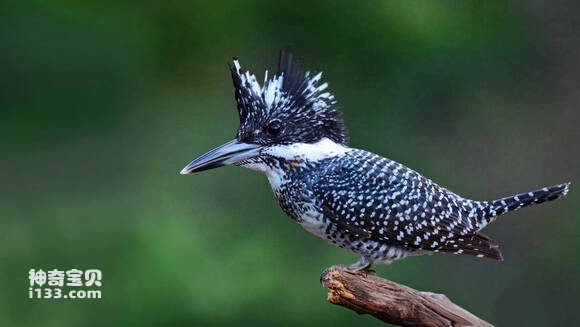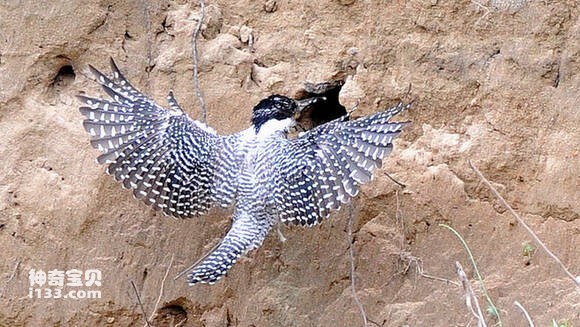Megaceryle lugubris
IUCN
LCBasic Information
Scientific classification
- name:Megaceryle lugubris
- Scientific Name:Megaceryle lugubris,Crested Kingfisher
- Outline:Climbing birds
- Family:
Vital signs
- length:37.2-42.5cm
- Weight:244-500g
- lifetime:No textual research information is available
Feature
Conspicuously crested
Distribution and Habitat
Country of origin: Afghanistan, Bangladesh, Bhutan, China, India, Japan, Korea, Lao People's Democratic Republic, Myanmar, Nepal, Pakistan, Thailand, Vietnam.
Traveler: Russian Federation.
Crested dogs inhabit forest streams, foothills, scrub or open forests, clear and slow-flowing rivers, streams, lakes, and irrigation canals. It often flies over rivers, streams, ponds and swamps looking down for food.
Appearance
The Crested fish dog is a medium-sized crested fish dog. The body length is 24-26 cm, the wingspan is 45-47 cm, the weight is 70-95 g, and the life span is 4 years. This fish has a prominent crest on its head. Black, with many white oval or other shape of large spots, the middle of the crown is basically white, only a few white round spots; White under mouth, pillow, back neck; The back, waist, and lower tail coverts are gray and black, and each feather also has many white stripes. The wings are black, the primary flight feathers have many less round white spots, and the secondary flight feathers have many neat white stripes. Chin and throat are white, with a thick black line under the mouth extending to the anterior chest. Forechest black, with many white stripes; Lower thorax, abdomen, short tail undercover white; The long tail undercover and the two flanks resemble the front chest, in black and white. Iris brown; Mouth black, upper mouth base and apex light greenish-brown; The feet
Details
Crested Kingfisher (Megaceryle lugubris, Crested Kingfisher) has three subspecies (1. The common subspecies of crested fish dog, Megaceryle lugubris guttulata. 2. Megaceryle lugubris pallida, a subspecies of Hokkaido dog. 3. Crested fish dog named subspecies Megaceryle lugubris lugubris.) .

Crested fish dogs fly more along the middle of the stream, once found food quickly dive, neat action. Usually live alone on the top of a tree branch near the water, the top of a telephone pole or on a rock, waiting for an opportunity to hunt. It puts its catch on a perch and plays with it, even tossing the fish up in order to swallow it from the head first. The food is mainly small fish, and eats crustaceans and a variety of aquatic insects and their larvae, but also pecks at small frogs and a few aquatic plants. The crested fish also maintains excellent vision after plunging into the water, because its eyes can quickly adjust to the contrast in view caused by the light in the water. So the fishing ability is very strong. The call resembles a high-pitched whistle.

Crested dogs breed from February to August, and most breed from May to June. Nests are built on steep banks, cliffs, ridges, or dikes in fields and streams. Dig with your mouth. The hole is round and small. These caves are generally bare of bedding. The eggs are laid directly on the nest ground. Three to seven eggs are laid per litter, with the majority being four to six. Oval, pure white, bright, slightly spotted, 37-40 mm ×30-35 mm in size, 1-2 broods per year; The incubation period is about 21 days, and the eggs are incubated by both sexes, but only fed by the female. In the northern regions, crested fish dogs nest in spring and summer. In the tropical north, crested fish dogs lay eggs from September to March, and in the south from April to August. In equatorial regions, nesting and laying can take place at any time of the year.

Listed on the International Union for Conservation of Nature (IUCN) 2012 Red List of Threatened Species ver 3.1 - Not Threatened (LC).
Protect wild animals and eliminate wild meat.
Maintaining ecological balance is everyone's responsibility!








